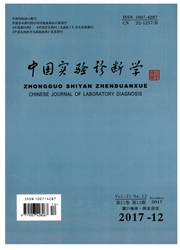

 中文摘要:
中文摘要:
目的分析富血小板血浆(PRP)凝胶作为组织工程细胞支架的可行性。方法抽取兔静脉血Eendersberg法制备PRP,测定PRP中血小板浓度,将PRP经激活剂激活后制备PRP凝胶生物细胞支架(PRG),并进行扫描电镜观察。将兔骨髓间充质干细胞(BMSCs)与PRG共培养,消化后将BMSCs接种再培养,观察BMSCs活性。结果通过Lendersberg两步离心法顺利制得PRP,血小板浓度与全血相比增加了3.74倍,PRP经过激活后5—10min形成胶冻状PRG,扫描电镜结果显示其具有复杂的立体网状结构,孔隙直径约50—100微米。兔BMSCs在PRG中培养3天后扫描电镜观察结果显示在PRG三维结构中,兔BMSCs在纤维素支架上附着良好,培养1周后将兔BMSCs消化分离后再接种培养,兔BMSCs生长良好。结论自体富血小板血浆凝胶生物细胞支架来源于自体,无免疫源性,本身含丰富的细胞生长因子,同时具有完整的三维结构和良好的组织相容性,是一种优良的组织工程细胞支架,具有良好的应用前景。
 英文摘要:
英文摘要:
Objective Analysis of platelet-rich plasma (PRP) gel as the feasibility of tissue engineering cell scaffold Methods We extracted the rabbit venous blood and prepared PRP through Lendersberg way,determined the concentra tion of platelets in PRP,then we prepared PRP biological gel cell scaffold (PRG) after the PRP was activated by the activator. We scanned the PRG under the scanning electron microscopy. Results We successfully got the PRP through the Lendersberg two-step centri{ugation way. The platelet concentration increased by 3. 74 times compared with the whole blood. The PRP transformed to the jelly PRG after 5 - 10 min activation. The scanning electron microscope showed that the PRG had a complex three-dimensional network structure,the porosity diameter was about 50 to about 100 microns. After 3 days co-cultured with the PRG, the rabbit BMSCs attached to the cellulose scaffold well in the 3D structure of PRG under the scanning electron microscopy. The rabbit BMSCs were digested after one week co-culture and inoculated again,the results showed the BMSCs grew well. Conclusion The biological gel cell scaffold formed by autologous platelet rich plasma is derived from autologous, non-immunogenic, rich in cell growth factor, but also has a complete three-dimensional structure and good histo-compatibility,which is a excellent cell scaffold in issue engineering and has a good application prospects.
 同期刊论文项目
同期刊论文项目
 同项目期刊论文
同项目期刊论文
 期刊信息
期刊信息
